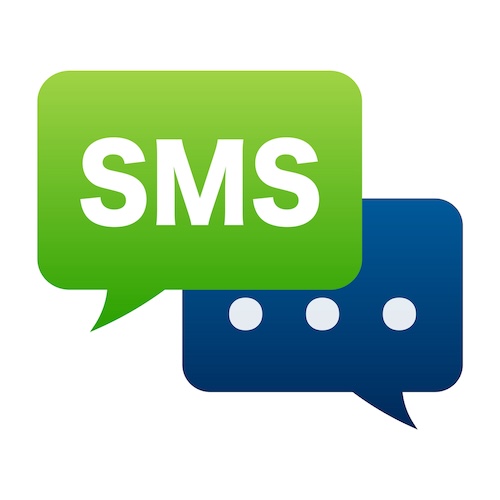Political email and SMS marketing remain two of the most powerful tools campaigns have to engage voters directly, build relationships, raise funds, and drive voter turnout. As digital channels become more crowded and voters grow wary of traditional advertising, the value of owned communication—delivered directly to a voter’s inbox or mobile device—continues to rise.
However, the political digital landscape is evolving. Regulatory changes, spam filters, rising voter expectations, and the need for personalization demand smarter strategies. This guide explores the future of political email and SMS marketing, best practices for execution, and how campaigns can win voters through these critical channels.
Why Email and SMS Remain Essential for Political Campaigns
1. Direct, Owned Communication Channels
- Bypass third-party platforms and algorithms.
- Maintain control over messaging frequency, tone, and timing.
2. Proven Fundraising Power
- Email accounts for over 50% of online political donations.
- SMS rapidly growing as a donation and GOTV driver.
3. Personalized, Two-Way Engagement
- Enables segmentation and tailored messaging.
- Allows voter responses, feedback, and micro-conversations.
4. Effective for GOTV and Last-Minute Reminders
- Drives action with immediacy—polling place reminders, event invites.
5. Cost-Effective Compared to Paid Media
- High ROI when properly managed and maintained.
Building and Maintaining a High-Quality Email and SMS List
1. Leverage Multiple Acquisition Channels
- Website sign-ups, petition pages, event registrations, donor lists.
2. Use Voter Files and CRM Data Wisely
- Ensure compliance with consent and opt-in regulations.
3. Regular List Hygiene and Maintenance
- Remove inactive contacts, correct formatting errors, avoid spam traps.
4. Invest in Data Enrichment
- Append voter records with mobile numbers, email validation, and issue interests.
Segmentation and Personalization Tactics
| Segment | Message Focus |
| High-propensity donors | Fundraising appeals with matching incentives |
| Young voters | Climate, social justice issues, registration info |
| Undecided voters | Issue-based persuasion messaging |
| Low-propensity voters | Turnout-focused, voting location and hours |
| Volunteer pipeline | Engagement, upcoming events, training invites |
Email and SMS Creative Best Practices
1. Strong, Clear Subject Lines and Openers
- Personalization increases open rates by up to 50%.
2. Use Dynamic Content and Personalization Tokens
- Insert name, location, or issue preference for relevance.
3. Keep SMS Concise and Action-Oriented
- 160 characters or less with clear CTAs.
4. Visuals and Video in Email
- Embed video thumbnails, candidate photos, or infographics.
5. Urgent and Deadline-Driven Messaging
- “48 hours left to register” or “Polls close in 2 hours.”
Tools and Platforms for Political Email and SMS
| Platform | Capabilities |
| Action Network | Progressive CRM with email, SMS, petition tools |
| NGP VAN/VoteBuilder | Voter file integration, email, SMS |
| Mobile Commons | Advanced SMS marketing, personalization |
| Hustle/Prompt.io | Peer-to-peer SMS outreach |
| Mailchimp/SendGrid | Email deliverability management |
Compliance and Privacy Considerations
1. Consent and Opt-In Requirements
- Explicit consent needed for SMS; follow TCPA guidelines.
2. Data Privacy Regulations
- Comply with CAN-SPAM, GDPR, and CCPA.
3. Political Ad Disclosures
- Include “Paid for by” language where required.
4. Unsubscribe and Opt-Outs
- Provide clear paths to opt-out of email and SMS.
Measuring Email and SMS Campaign Success
| Metric | Why It Matters |
| Open Rates (Email) | Subject line effectiveness, list health |
| Click-Through Rates (CTR) | Engagement with content and CTAs |
| Conversion Rates | Donations, sign-ups, volunteer or voter action |
| Opt-Out/Unsubscribe Rates | List fatigue or messaging misalignment |
| SMS Response Rates | Direct engagement and two-way communication |
| Deliverability Rates | Ensures messages land in inboxes, not spam folders |
Real-World Example: Email and SMS Success in a Senate Race
Scenario: A U.S. Senate campaign needed to boost turnout and close fundraising gaps in the final weeks.
Tactics:
- Sent a segmented email series to high-propensity donors with matching funds appeals.
- Launched SMS GOTV campaign with polling place links and deadlines.
- Integrated video messages from the candidate.
Results:
- $2.4 million raised in the final 10 days from email appeals.
- 22% increase in turnout among low-propensity voters receiving SMS.
- 8% lift in website visits during GOTV weekend.
Common Pitfalls and How to Avoid Them
1. List Fatigue from Over-Messaging
- Solution: Limit sends, use dynamic scheduling based on engagement.
2. Lack of Testing and Optimization
- Solution: A/B test subject lines, creative, timing, and segmentation.
3. Failure to Monitor Deliverability
- Solution: Track bounces, adjust frequency, use warming strategies.
4. Generic, Non-Personalized Content
- Solution: Build persona-driven campaigns with tailored messaging.
The Future of Political Email and SMS Marketing
1. AI-Driven Personalization and Predictive Engagement
- Optimize send times, messaging, and audience selection in real time.
2. Interactive SMS and MMS
- Rich media, clickable CTAs, and survey responses within messages.
3. Hyper-Localized Messaging
- Geo-targeted reminders and event invitations.
4. Cross-Channel Integration
- Seamless handoffs from email/SMS to web, video, and social engagement.
5. Stronger Voter Privacy Regulations
- Increased focus on consent, transparency, and data protection.
Conclusion: Email and SMS Are the Backbone of Political Digital Campaigning
Well-executed email and SMS campaigns enable political campaigns to:
- Build lasting voter relationships
- Drive fundraising at scale
- Increase turnout through timely, personalized reminders
Key Takeaway: As digital channels become noisier, email and SMS remain two of the most direct, measurable, and impactful tools in a campaign’s arsenal.
For expert support building compliant, persuasive, and high-performing email and SMS campaigns, contact Propellant Media—your partner in digital voter engagement.

